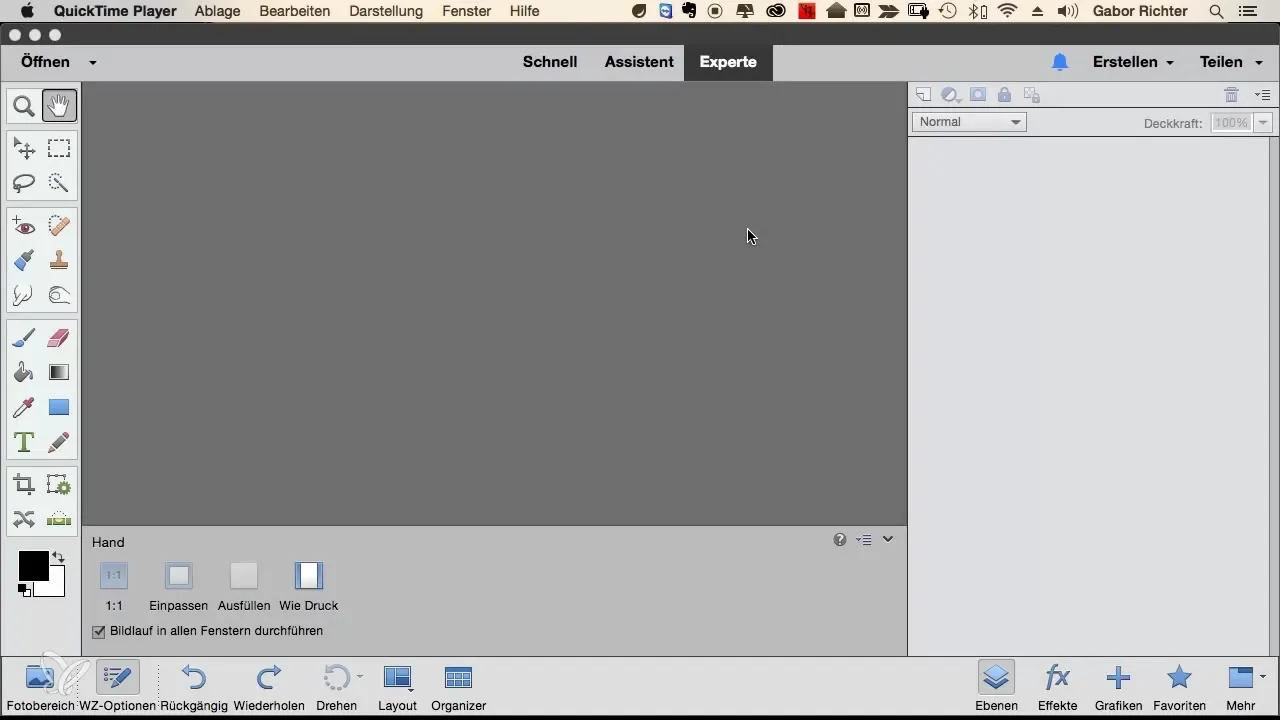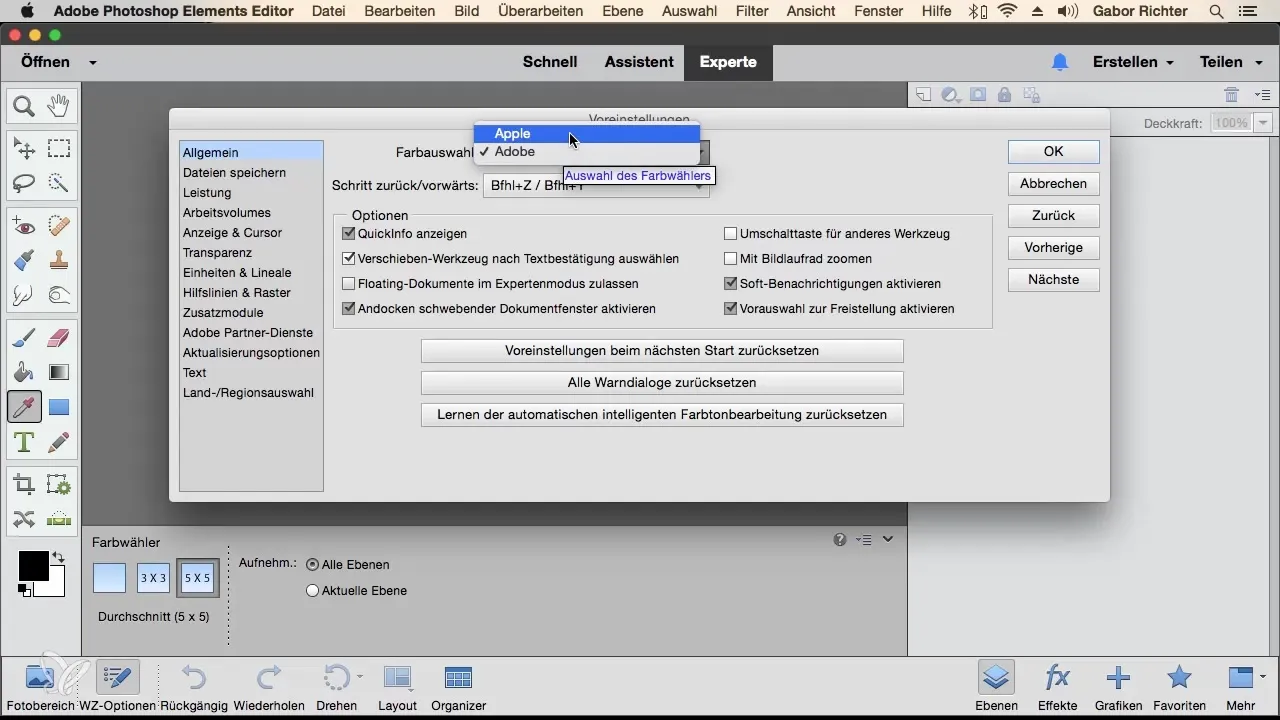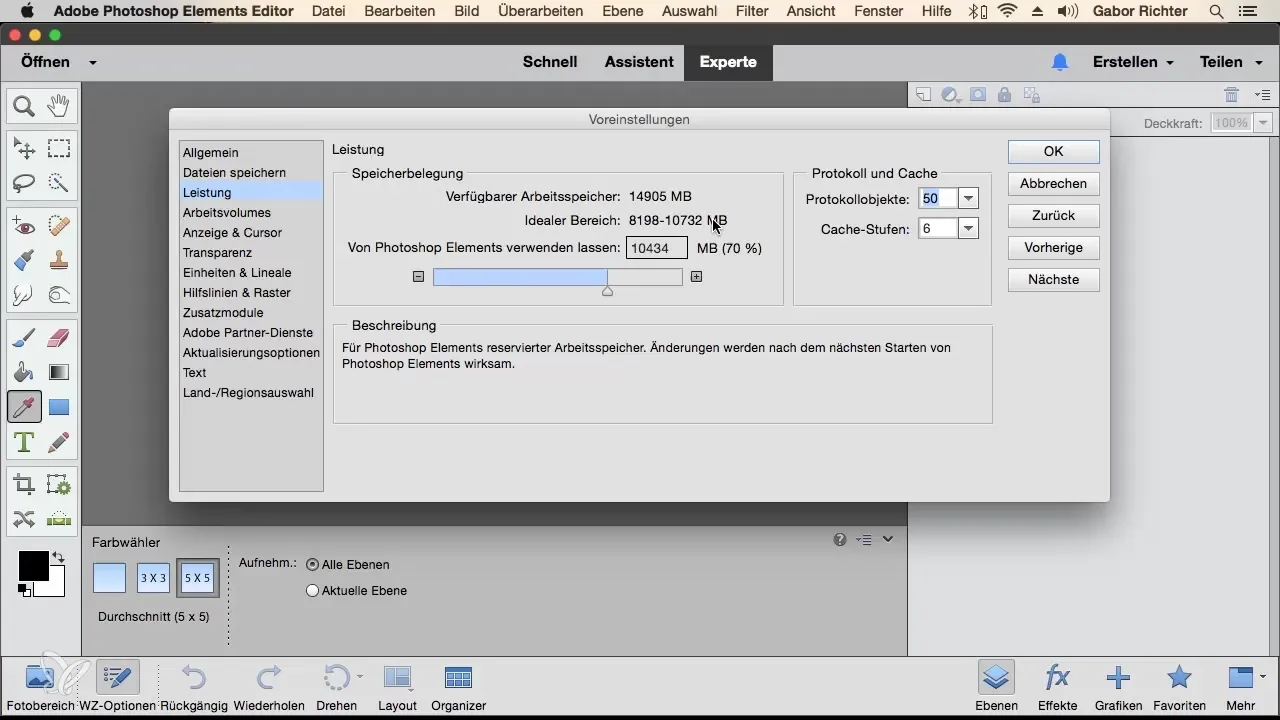Before you start with Photoshop Elements, it makes sense to take a look at the basic settings. Often, a small adjustment to the preferences can greatly improve your effectiveness and user experience. In this guide, I will take you through the most important settings and show you how to customize your workspace to your liking.
Key Insights
With the right settings in Photoshop Elements, you not only get a better overview, but also a more effective way of working. Use the customization options to enhance your performance and tailor the software to your needs. Pay particular attention to the areas of color selection, memory allocation, and tool display.
Step-by-Step Guide
First, you should open Photoshop Elements and enter the editor. Here you will find the general settings that offer you a variety of customization options.

It all starts with the general color selection. Currently, the default value is set to Adobe RGB. You can also choose the Apple color space if that better suits your workflow. I generally recommend staying with Adobe RGB.

One of the most important areas is performance. Under the menu item "Performance," you have the option to adjust the memory allocation for Photoshop Elements. By default, 70% of your available RAM is reserved for the software. If you have other programs running in parallel, it may be wise to lower this value to free up system resources.

Another useful feature is the setting for history states. By default, 50 undo steps are saved, which means you can revert to the last 50 actions. If you need more than 50, you can increase this number up to 100, but be aware that this may affect performance.
In the "Scratch Disks" section, you have the option to select a secondary hard drive to be used for temporary file storage. If available, this can also improve performance.
Under "Display and Cursors," you can customize the appearance of the tools. For example, you have the choice between a standard brush cursor or a crosshair cursor. I recommend leaving these settings at default to ensure clear and simple handling.

The transparency settings allow you to adjust the background in the workspace. Whether you choose a gray, red, or the default transparent background does not affect the actual images but only the display.
For precise work, it is essential to set the unit of measurement for rulers. You can choose between centimeters, pixels, or inches. Caution: Choosing the correct unit of measurement is particularly important when creating print products.
In the guidelines and grids section, you can set the colors that should assist you during editing. By default, these are colored cyan, which I personally consider good. However, you have the freedom to change the color to your liking.
Extensions or plugins allow you to integrate additional functionality into Photoshop Elements. If you have such plugins, you can install them through the settings.
In the "Update Options" menu, you decide whether you want to automatically download updates or receive a notification. This way, you will always stay up to date.
The font size in the menus can also be adjusted. If you need larger fonts, you can set this here.
Finally, you should also address your default settings for region and language. This ensures that you receive support in German when needed.
Overall, you can leave most settings as they are or adjust them if your workflow requires it. Over time, you will develop a sense of which adjustments make sense for you.
Summary
With the basic settings in Photoshop Elements, you can tailor the software to your individual work needs. Use the various presets to increase your productivity and create an improved user experience.
Frequently Asked Questions
What color space setting is recommended in Photoshop Elements?I recommend using the Adobe RGB color space as it usually provides the best results.
How many undo steps can I save in Photoshop Elements?By default, 50 steps are saved, but you can increase this value up to 100.
What can I do if Photoshop Elements is running slowly?Check the memory allocation in the performance settings and adjust it. You can also try reducing the number of history states.
Where do I set the unit of measurement in Photoshop Elements?You can find the setting under the "Rulers" section, where you can choose between centimeters, pixels, and inches.
Is plugin installation possible in Photoshop Elements?Yes, you can install extensions or plugins through the settings.


